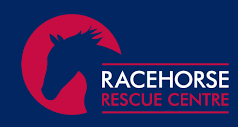Tax relief when you donate to a charity
Donating through Gift Aid means charities and community amateur sports clubs (CASCs) can claim an extra 25p for every £1 you give. It won’t cost you any extra.
Charities can claim Gift Aid on most donations, but some payments don’t qualify.
What you need to do
You need to make a Gift Aid declaration for the charity to claim. You usually do this by filling in a form – contact the charity if you haven’t got one.
You must give a declaration to each charity you want to donate to through Gift Aid. Get your RRC Gift Aid form HERE
You can include all donations from the last 4 years. Tell the charity about any tax years where you didn’t pay enough tax.
Paying enough tax to qualify for Gift Aid
Your donations will qualify as long as they’re not more than 4 times what you have paid in tax in that tax year (6 April to 5 April).
The tax could have been paid on income or capital gains.
You must tell the charities you support if you stop paying enough tax.
Higher rate taxpayers
If you pay tax at the higher or additional rate, you can claim the difference between the rate you pay and basic rate on your donation. Do this either:
- through your Self Assessment tax return
- by asking HM Revenue and Customs (HMRC) to amend your tax code
ExampleYou donate £100 to charity – they claim Gift Aid to make your donation £125. You pay 40% tax so you can personally claim back £25.00 (£125 x 20%).
With Payroll Giving, you don’t pay the difference between the higher and basic rate of tax on your donation.
Getting tax relief sooner
In your Self Assessment tax return, you normally only report things from the previous tax year.
But for Gift Aid, you can also claim tax relief on donations you make in the current tax year (up to the date you send your return) if you either:
- want tax relief sooner
- won’t pay higher rate tax in current year, but you did in the previous year
You can’t do this if:
- you miss the deadline (31 January if you file online)
- your donations don’t qualify for Gift Aid – your donations from both tax years together must not be more than 4 times what you paid in tax in the previous year
If you don’t have to send a tax return, contact HMRC and ask for a P810 form. You’ll need to submit it by 31 January after the end of the previous tax year.

